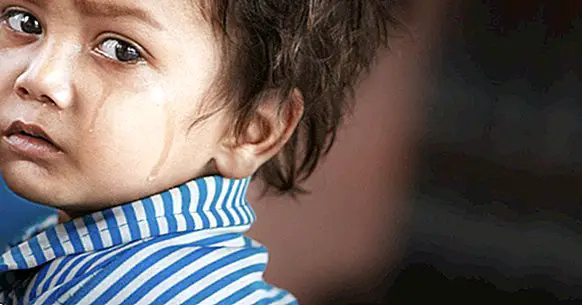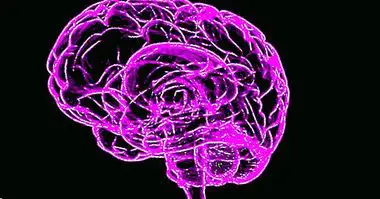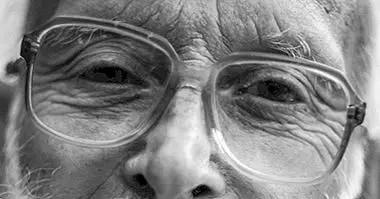Child abuse: physical and psychological consequences in abused children
A series of recent investigations reveal that neurobiological alterations as a consequence of child abuse, not only increase the possibility of suffering mental disorders in adulthood but also increase the chances of suffering future organic disorders , as well as behavioral alterations.
Child abuse
Child abuse, intrafamily violence and abandonment in childhood are possible traumatic events for any child, and are much more frequent than you think to . According to him Child Mental Health Center of the University College of LondonEach year, between 4 and 16 percent of children in Western industrialized countries suffer physical abuse and 1 out of every 10 suffers from extreme psychic overload or overload.
With regard to sexual abuse in childhood, between the 5 and 10 percent of girls and 5 percent of boys have ever suffered it throughout his childhood.
Adverse experiences during childhood
I have divided the following study into different phases, since despite the fact that it started during the period 1995-1997, the analysis of the data has been prolonged for several years, obtaining a large number of results.
Phase 1 - Start
The study is usually abbreviated as ACE (for its acronym in English).
The investigation began in 1995 in San Diego, with the participation of 17,000 subject s that were submitted to medical check-ups on a regular basis . They should also report in detail on what type of traumatic experiences they have suffered during childhood (violence, abuse, abandonment) and to what extent.
Phase 2 - First results
In 1998, the researcher Vincent Felitti , who belonged to the preventive medicine department of the Kaiser Permanente medical group, reached the following conclusions when analyzing the data obtained by the ACE study together with his team.
According to one survey used During the study, subjects who answered affirmatively to more than three questions about childhood abuse and abandonment during childhood, had up to 12 times more possibilities to suffer alcoholism, drug addiction or develop a depression, compared to people who had not suffered these events (and therefore, responded negatively to the survey).
Other striking results were the increase in: suffer from smoking and obesity ; practice less sports and have sporadic sex.
Phase 3 - Analysis of Variables
Subsequent to the previous results, in the year 2003 the researchers decided to check the results on the increase of the appearance of cardiovascular diseases coronary arteries (as a consequence of abuse and abandonment) in the following way.
They analyzed how this type of disease increased in three different ways:
- Taking all the variables, the possibility of suffering cardiovascular coronary diseases is 3.6 times higher than in the population that has not traumas children. These variables include individual characteristics (sex, age, physical activity and eating habits), psychological problems (depression and frustration) and, of course, if they have suffered some trauma during childhood .
- Taking the groups of variables of psychological problems and childhood traumas, the possibility increased 3.1 times.
- Taking only variables about childhood traumas, the possibility was 2.6 times higher.
That is, what increases the most the possibility of suffering coronary cardiovascular problems s they are neither sex, nor if they suffer from depression, nor eating habits, nor physical activity, nor any of these variables, but the traumas in childhood.
Phase 4 - Latest results
Finally, in 2004, other subsequent evaluations of the same results revealed that those who had suffered this abuse during childhood and youth presented more frequently coronary heart disease , and more specifically: the more serious the childhood traumas were, the greater were the possibilities of suffering from cardiovascular diseases, pulmonary pathologies, cancer, liver diseases (blood related diseases) and autoimmune disorders.
Brief biological explanation of the effects of child abuse
The child traumas They alter the biological mechanisms of the organism. Stress hormones and certain neurotransmitters influence leaving long-term traces in the child's brain.
These alterations are especially evident in communication between the hypothalamus, pituitary gland and adrenal cortex .
- During a stressful situation, the hypothalamus secretes a hormone called corticotropin (CRH) that stimulates the pituitary.
- The pituitary then releases into the bloodstream another hormone called adrenocorticotropa (ACTH).
- Finally, the adrenal cortex (located above the kidneys) receives the ACTH, and this reacts releasing cortiso l (stress hormone).
Emotional abuse, abandonment and multiple sclerosis
A study carried out in the University Clinic Eppendorf of Hamburg, led by the researcher Carsten Spitzer obtained the following surprising results.
He chose a total of 234 patients with multiple sclerosis and 885 healthy people . All of them had to report on their experiences during childhood. What was obtained was that both the emotional abuse and the abandonment were the twice as frequent among individuals with multiple sclerosis , compared to the healthy group.
A moral quartet, a Metabolic Syndrome and Child Traumas
This syndrome consists of four factors:
- Abdominal fat
- Alterations in glucose metabolism
- Alterations of blood lipids
- Arterial hypertension
One of the keys to this syndrome is that the appearance of one of these factors, power the appearance of the others .
Well, various works have confirmed that these 4 components belonging to the metabolic syndrome may appear as a result of traumatic experiences during childhood , of which, the most accused is that of abdominal adiposity .
The latter has been corroborated by a study called NESDA (for its acronym in English) and carried out in the year 2012, in the Netherlands on depression and anxiety. In it they found a relationship between Sexual abuse during childhood and the excess fat in the abdomen.
Child abuse and psychosis in adulthood
First of all, let's define what is abuse . According to World Health Organization:
"Child maltreatment is defined as the abuse and neglect of children under 18, and includes all types of physical or psychological abuse, sexual abuse, neglect, negligence and commercial or other exploitation that cause or may cause cause damage to the health, development or dignity of the child, or endanger their survival, in the context of a relationship of responsibility, trust or power. Exposure to dating violence is also sometimes included among forms of child abuse. "Taking into account the neurological immaturity of the brain during the first years of life it is well known that it is more sensitive to events and experiences. This sensitivity gives the advantage of learning with great speed, but it can also entail great dangers:
Childhood abuse and psychotic symptoms
According to a study by the University of Barcelona, he analyzed the relationship between child maltreatment and the development of psychotic symptoms . The first thing they discovered was that even though I hadto people who, despite having suffered child abuse, were able to overcome and lead a mentally healthy life .
Subsequently, the results pointed out that such individual differences reside in the neurotrophic factor gene (proteins that are responsible for the survival of neurons) derived from the brain known as BDNF. So it seems, this gene promotes growth, differentiation of neurons and their survival during periods of stress .
In this study published in the journal The British Journal of Psychiatry, it is explained how exposure to serious child abuse (sexual, physical and / or emotional), is associated with a higher probability of suffering psychotic symptoms in adult life. In addition, and this is where the BDNF gene comes into play, subjects who present certain alleles for this gene were more vulnerable to this type of abuse, compared to those with another variable (the former had an allele called Met and the seconds Val).
If you do not understand the latter very well, think that for blood there are 3 alleles: A, B and O, and from the combination of these different blood groups are obtained.
Genetic factors
There are a number of genes that increase the chances of suffering long-term organic problems if they have suffered traumatic experiences.
According to some studies, one of these genes seems to be the FKBP5 gene . This gene, encodes a protein (along with others) affects the sensitivity of tissues and organs that react to cortisol (commonly known as the "stress hormone").
Given the results, it has been found that certain variants of the FKBP5 raise the risk or depression (multiplying by 8 for one of these variants), and post-traumatic disorders, for those who suffered abuse in childhood.
In addition, these same data also suggest that some of the variants of this same gene, also relate to organic disorders . But this remains pending confirmation.
What is really striking about this type of genes is the importance they can have for the appearance of various disorders, but only if there has been a environmental trigger , which in this case, are abuses in childhood. In other words, if a person has not experienced traumatic and stressful events during his childhood , the possession of these genes will not increase the chances of suffering from these disorders.
Child abuse and its influence on epigenetic modifications
This is known as epigenetic modifications :
These modifications are appendages that adhere to the DNA, influencing the frequency with which a certain gene is read. That is to say, although the genetic code of the person does not change, its functioning does.
I recommend this small documentary about the relatively new field of epigenetics .
Bibliographic references:
- Burden and consequences of child maltreatment in high-income countries. R. Gilbert et al. in The Lancet, vol. 373, pgs. 68-71, 2009.
- Moderation of adult depression by a polymorphism in the FKB5 gene and childhood physical abuse in the general population ". K. Appel et al. in Neuropsychopharmacology, vol. 36, pgs. 1982-1991, 2011.
- Childhood abuse and BDNF-Val66Met polymorphism: Evidence for gene-environment interaction of the development of adult psychosis-like experiences. S. Alemany et al. in The British Journal of Psychiatry, vol. 199, no. 1, p. 38-42, 2011



















